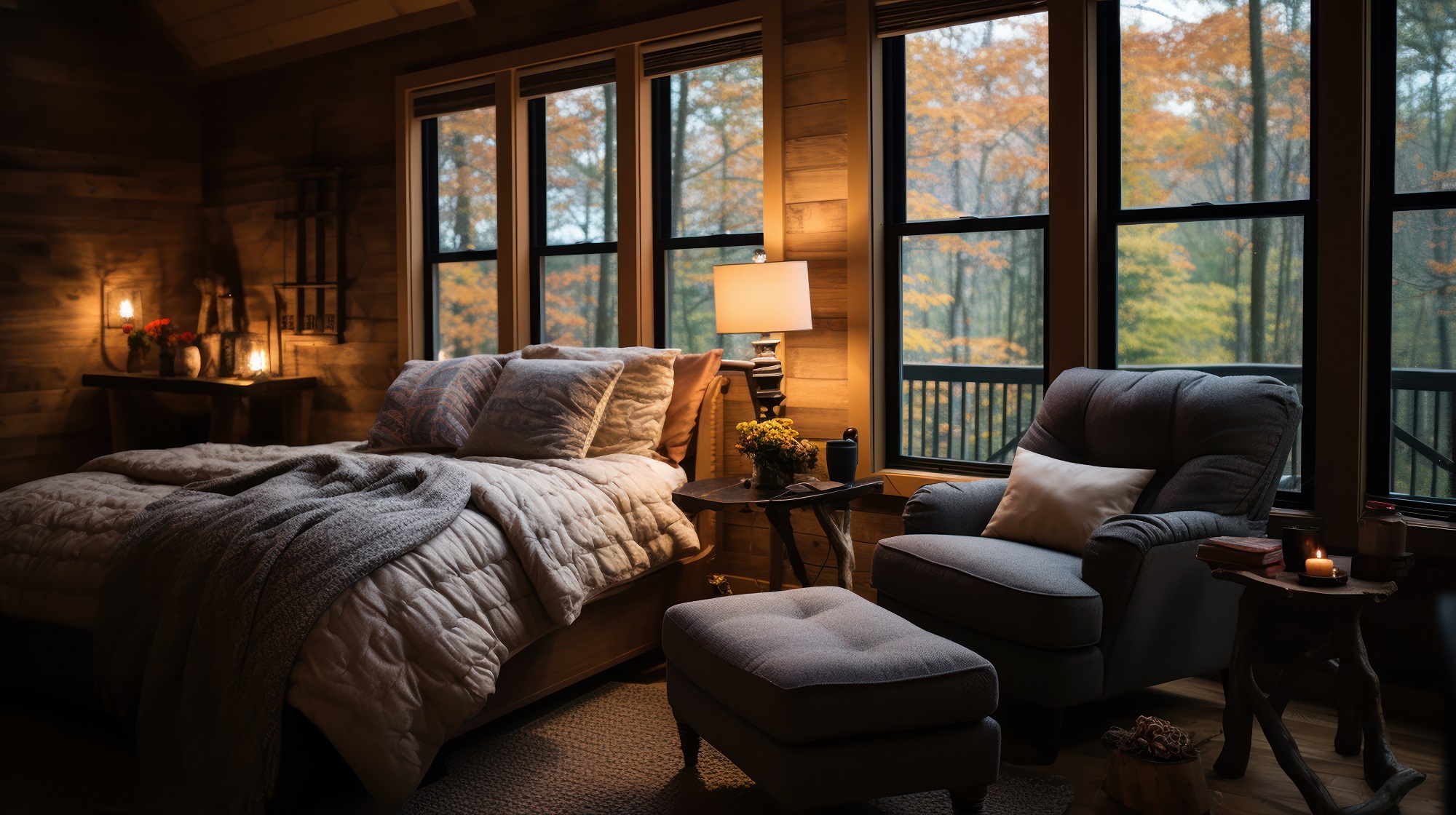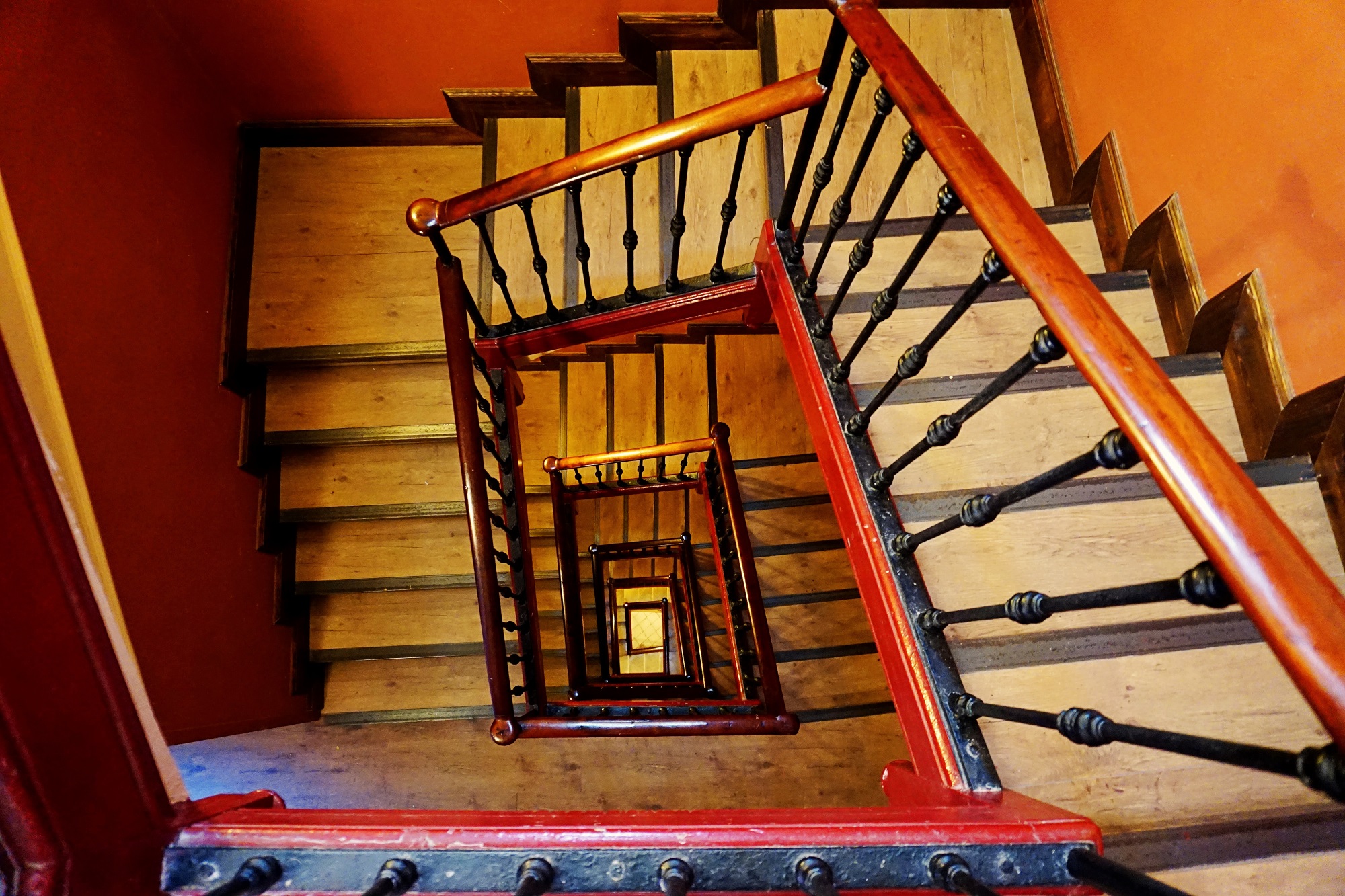Introduction
Small spaces in Buffalo homes can sometimes present a decorating challenge, but with the right tiling solutions, you can transform compact areas into visually stunning and functional spaces. In this blog post, we’ll explore creative ideas to maximize the visual appeal of smaller rooms using clever tile choices, patterns, colors, and layouts that create the illusion of more space.
Light and Bright

Choosing light-colored tiles in shades like whites, creams, and soft pastels serves as a fundamental technique to instill a sense of spaciousness and luminosity in a room. These hues reflect natural light, imparting a bright and airy ambiance while visually expanding the perceived size of the space. In conjunction with this, opting for glossy finishes further elevates this effect by maximizing the tiles’ reflective properties. Glossy surfaces not only augment the room’s overall brightness but also contribute to a polished and contemporary aesthetic. The smooth and reflective nature of these tiles ensures that available light is efficiently distributed throughout the space, creating an atmosphere of openness and enhancing the room’s overall sense of depth, making it feel more inviting and expansive.
Large Format Tiles
Incorporating large-format tiles is a transformative approach to enhancing the visual aesthetics and perceived spaciousness of a room. Choose large tiles to reduce grout lines, creating a cleaner, more spacious look with minimal interruptions. Fewer grout lines create visual simplicity and a seamless surface, enhancing a sense of continuity. Extending large tiles seamlessly from floor to walls creates a cohesive visual flow for an uninterrupted design experience. This technique eliminates visual breaks, creating the illusion of taller walls and enhancing the perceived height of the room. Large-format tiles create an open, spacious feel, transforming small spaces into grand environments.
Diagonal Tile Layouts
Opting for a diagonal tile layout is a design strategy that introduces dynamism and visual interest to a space, deviating from the conventional straight patterns. By installing tiles diagonally, a sense of movement and energy is infused into the room, immediately capturing attention and contributing to a more dynamic aesthetic. Beyond its stylistic appeal, the use of diagonal lines serves a functional purpose in creating the illusion of elongation within the space. Diagonal placement naturally draws the eye along the longer axis of the tiles, visually stretching the dimensions of the room.
This clever manipulation of perspective is particularly effective in smaller spaces, where the elongating effect brings an added sense of spaciousness and openness, making the room feel larger and more inviting. In essence, the diagonal tile layout is a design choice that not only adds flair and uniqueness but also plays a strategic role in optimizing the perceived size and visual dynamics of the room.
Mosaic Magic

Mosaic Magic transforms a space by strategically incorporating mosaic tiles in key areas, such as a feature wall or backsplash, offering a nuanced and visually captivating design. By selectively embracing mosaic tiles, homeowners can infuse texture and depth into their surroundings without overwhelming the entire space. This intentional placement allows for a harmonious integration of artistic flair, creating points of interest that elevate the overall aesthetic. Opting for smaller mosaic patterns amplifies the impact, drawing the eye with intricate detailing and forming captivating designs. Whether adorning a feature wall or enhancing a backsplash, the smaller mosaic patterns not only contribute to the tactile richness of the space but also serve as deliberate focal points, adding a personalized and visually dynamic dimension to the interior.
Vertical Tile Patterns
Vertical Tile Patterns provide a transformative design strategy by opting to install tiles in a vertical orientation, directing attention upward and ingeniously creating the illusion of higher ceilings. This deliberate choice of vertical alignment serves as a visual trick, elongating the walls and fostering a heightened perception of space. The upward movement of the eye, accentuated by vertical patterns, imparts a sense of grandeur and openness, making rooms feel more expansive and inviting. Particularly effective when executed in lighter shades, this technique not only adds a touch of sophistication to the space but also amplifies the luminosity, contributing to an overall atmosphere of airiness and spaciousness. Vertical tile patterns become a powerful tool in interior design, offering a simple yet impactful means to enhance the vertical dimensions of a room, redefine its proportions, and create a more visually dynamic and open environment.
Monochromatic Magic
Incorporating Monochromatic Magic into your interior design involves choosing varying shades within a single color family, cultivating a unified and clutter-free aesthetic that imparts an open and cohesive atmosphere to the space. This intentional selection of harmonious tones, especially in lighter shades, fosters a sense of unity and expansiveness, ideal for smaller spaces. To enhance visual interest without compromising the simplicity of the color scheme, consider integrating different textures within the same color family. This nuanced layering of textures adds depth and sophistication, ensuring that the room remains inviting and elegant while adhering to the uncluttered charm of the monochromatic palette.
Mirrored Tiles and Reflective Surfaces
Elevate your interior with Mirrored Tiles and Reflective Surfaces, a design strategy that maximizes natural light and enhances the perceived spaciousness of a room. By strategically introducing mirrored tiles or reflective surfaces, light is deftly bounced around the space, creating an atmosphere that feels brighter, airier, and more expansive. The strategic placement of these reflective elements, whether in the form of tiles or mirrors, contributes to the illusion of depth within the room. This technique becomes especially powerful in smaller spaces, where the careful play of light and reflection adds a touch of glamour, fosters a sense of openness, and transforms the overall ambiance into one of luminosity and dimensional richness.
Open Shelving with Tiled Backing
Bring both functionality and aesthetic intrigue to small spaces through the integration of Open Shelving with Tiled Backing. By incorporating open shelving and tiling the backing with a contrasting or complementary color, you introduce a compelling visual element that transcends mere storage. This design strategy not only adds a layer of visual interest but also imparts a sense of depth to the room. The combination of exposed shelving and creatively tiled backings creates a dynamic focal point that showcases decorative elements, transforming everyday storage into a curated display. This clever juxtaposition of textures and colors not only optimizes the utility of shelving but also elevates the overall design, making it an effective and stylish solution for smaller spaces.
Transitionless Flooring
Opt for Transitionless Flooring to foster a sense of continuity and spaciousness in your home design. By selecting a consistent tile flooring throughout connected spaces, you eliminate visual interruptions, creating a seamless flow that seamlessly connects different areas. This design strategy not only simplifies the overall aesthetic but also imparts a feeling of openness and cohesion. The absence of transitions between spaces encourages a harmonious visual experience, making the entire area feel larger, more interconnected, and effortlessly unified, enhancing the overall flow and aesthetic appeal of your home.
Strategic Tile Accents
Implementing Strategic Tile Accents is a design approach that adds flair to small spaces without overwhelming them. By using tile accents sparingly, such as a single accent wall or a decorative strip, you introduce personality and visual interest without closing in the room. The key lies in judiciously selecting patterns or textures within these accent areas, drawing attention and cleverly creating the illusion of expansiveness. This thoughtful application of tile accents not only enhances the aesthetic appeal of the space but also contributes to a sense of openness and individuality, making it an effective strategy for small room transformations.
Conclusion
With these creative tiling solutions, small spaces in Buffalo homes can become inviting and visually appealing. By strategically choosing patterns, colors, and layouts, you can enhance the perceived size of a room while infusing it with style and personality. Experiment with these ideas to transform your compact spaces into functional, beautiful areas that feel larger and more open.





